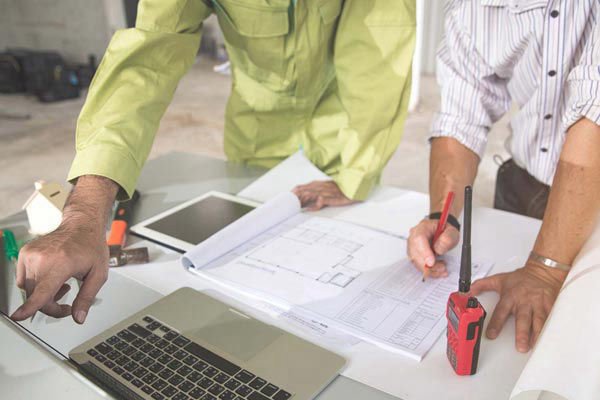Heaters are appliances that are made to generate heat or warmth for a building. Heaters exist with various different mechanisms or fuels, like electricity, air, water or steam that enable them to run. The most popular kind of heating systems are heat pumps, which can extract heat from different sources like the ground, environmental air and so on. Other popular choices of heating systems include furnaces that burn fuel to provide heated air and boilers that heat water to produce steam and forced-water systems. Electric heaters are also commonly used in several industrial spaces. Electrical heaters convert electrical energy to heat energy. This is done with the help of an electrical resistor which enables this conversion of energy. Alternatively, heat pumps use an electric motor to drive a refrigeration cycle. Once energy is drawn from a particular source, it is directed into the space to be warmed. This cycle can also be reversed so that the interior space is cooled, as in the case of air conditioners. Heating services are demanded in a variety of different industries and it is important to choose a heating system that is appropriate to your specific needs.
Ventilation is the process of altering the air in such a manner so as to change the environmental condition of it within a space. This may be to control temperature, remove moisture, odors, smoke, heat, dust, bacteria, carbon dioxide, or to replenish oxygen. There are three kinds of ventilation- mechanical or forced ventilation, natural ventilation, and mixed-mode. Natural ventilation refers to employing natural rhythms in the movements of wind and air through the architecture of a space to make the most of it. Symetrix provides solutions for mechanical ventilation, which is facilitated by an air handler (AHU). Humidity, odor and contaminant can often be removed in this way and this system is employed in industries where control of air quality is crucial. They are also used for residential and domestic purpose in kitchens and bathrooms or as ceiling fans in rooms. Mixed-mode ventilation refers to a combination of the two, also which Symetrix aims to incorporate in their design based on the specificities of a project. Heating and Ventilation services are crucial to working environments in various industries. Controlled temperature and humidity in work spaces minimises work related fatigue and improves efficiency. In commercial establishments, too, the environment and air condition improve business and footfall.
An air conditioning system is one that removes heat or moisture from an internal space, treats it using a refrigeration cycle, and produces cool air. This refrigeration cycle removes warm air and replaces it with cooler air. There are 6 different types of air conditioners— Central, Ductless/Mini-split, Window, Portable, Hybrid and Geothermal systems. They all work on a basic underlying system. The thermodynamic concept that supports the refrigeration cycle involves an evaporator, compressor, condenser and an expansion valve. The cycle changes the pressure or state of the refrigerant in order to absorb or release heat. This refrigerant or coolant absorbs heat from inside a space and pumps it outside. The reason why these systems are called split systems is because there is an indoor unit and an outdoor unit that works according to this cycle. It begins with the flow of air from a source, over the evaporator, which holds coolants inside it. Heat from the air gets transferred to the refrigerant/coolant inside.
Following the second law of thermodynamics, heat is transferred spontaneously from the air to the coolant. Upon heat absorption from the air, the refrigerant undergoes a change of state from liquid to vapor. Further, the vaporized refrigerant moves to the next unit, the compressor. Within the compressor, vapor gets compressed in such a way that there is a massive reduction in volume and an increase in pressure. This leads to a significant increase in temperature, in relation to the temperature outside. This hot refrigerant is then transferred to the condenser, the next unit within the cycle. The condenser blows hot air outside through the even hotter condenser coils. This forms a part of the outdoor system of a split system. In this process, heat is removed from the refrigerant and released outside. During this heat removal process, the refrigerant once again undergoes a change of state from vapor back to liquid. At the end of this process, the pressure and temperature of the liquidized refrigerant is still higher than it should be. This is resolved by passing it through and expansion valve. This expansion process depressurizes and reduces the temperature of the refrigerant. Now, air from the expansion process goes back into the evaporator, and the cycle repeats itself. It is this process that flows between the indoor and outdoor units within a split system that causes air conditioners to run. This is the fundamental operating idea behind every single air conditioner. It is upon this system that minor changes and alterations are made to produce different kinds of air conditioner with different energy sources like solar energy, electrical energy and so on. Some air conditioning systems have the option to reverse the cycle and act as heat pumps, which are popularly employed in industries. They are also capable of heating the air and are also called ‘reverse cycle air conditioners.
In very dry climates, evaporative coolers are a kind of air conditioner that are used. These usually work with dry air. Air conditioning may also be achieved through a process called free cooling, which are high in efficiency and sometimes work with STES or Seasonal Thermal Energy Storage systems. Symetrix specializes in air conditioning services and understands the nuances that work behind the various processes involved.

For any enquiries please feel free to email us at
info@symetrix.net.in
One of our representatives will get in touch with you
#29/2, Race Course Rd,
Madhava Nagar,
Gandhi Nagar,
Bengaluru, Karnataka 560001
Landline
+91 80 22343540
About Us
Clients
Services

Copyright © 2020 Symetrix. All Rights Reserved.